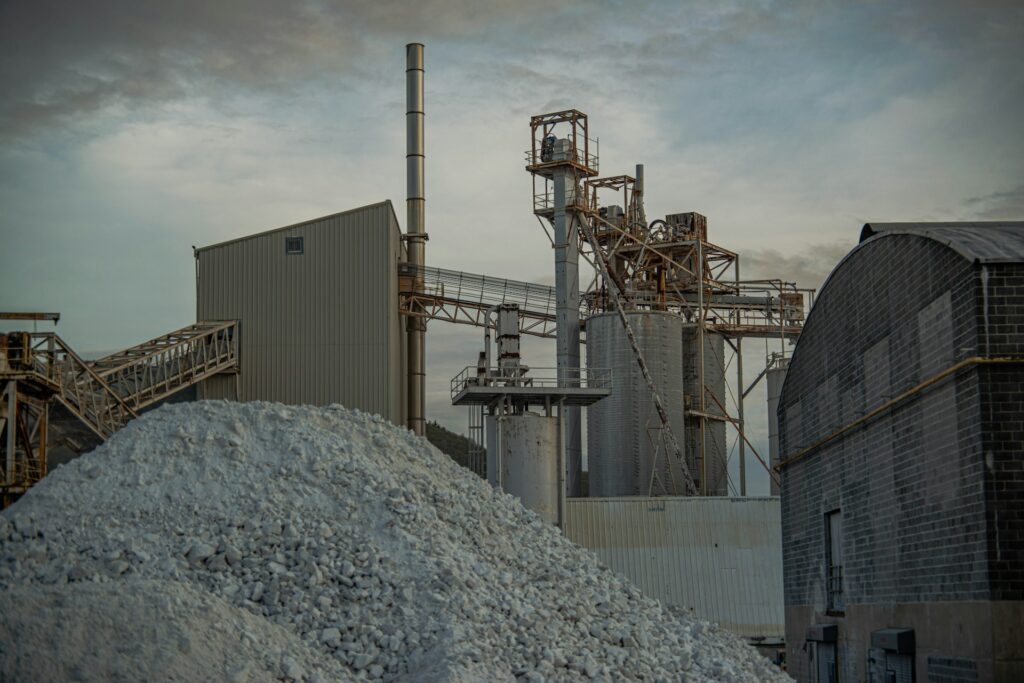
As the global demand for cement surges to support rapid urbanization and infrastructure development, a silent health crisis is taking shape across the world’s top cement-producing nations. Workers handling cement in countries like China, India, the United States, and Vietnam are increasingly vulnerable to a range of occupational hazards—including airborne contaminants, chemical burns, and long-term respiratory disease—often with minimal protective measures in place.
China: Largest Producer, Deep Health Concerns
China produces over 2 billion metric tons of cement annually, making it the world’s dominant supplier. But this production comes with significant risks. Numerous studies, including those published by Chinese academic institutions and labor rights groups, report high incidences of silicosis among cement workers, especially in rural areas and unregulated small plants.
Fine particulate matter (PM₂.₅ and PM₁₀) from cement processing routinely exceeds both national and international air quality standards inside factory units. Long-term exposure to these particles is associated with chronic obstructive pulmonary disease (COPD), reduced lung function, and increased cardiovascular risk.
Despite stricter environmental rules in recent years, dust control, worker screening, and respirator use remain inconsistent across China’s vast network of cement producers.
India: Rapid Growth, Inadequate Safeguards
India ranks as the second-largest cement producer globally, with an output exceeding 370 million metric tons in 2023. However, health safeguards for the country’s large informal labor force remain weak. Investigations by public health institutes have shown that over half of cement factory workers report chronic respiratory symptoms, including persistent coughing, wheezing, and chest tightness.
Access to personal protective equipment (PPE) remains limited, particularly among temporary or unskilled laborers in smaller plants. There is also a growing number of reported cases of dermatitis and eye injuries due to direct contact with wet cement and improper handling of chemicals.
United States: Regulation Amid Violations
Cement production in the United States, though smaller in scale, is heavily regulated by the Environmental Protection Agency (EPA) and the Occupational Safety and Health Administration (OSHA). Yet, several OSHA inspection reports from 2023–2024 show violations involving inadequate dust suppression, respirator non-compliance, and insufficient worker training.
Airborne pollutants such as sulfur dioxide (SO₂), nitrogen oxides (NOₓ), and heavy metals remain key concerns, especially in high-capacity plants in states like Texas and California. While the regulatory framework exists, implementation gaps continue to place workers at risk.
Vietnam: Export Growth, Limited Oversight
Vietnam has emerged as a leading cement exporter, producing over 100 million metric tons annually, with substantial exports to neighboring countries and South Asia. However, health monitoring in the industry has not kept pace.
Surveys conducted by local universities and labor organizations indicate that many cement workers lack even basic safety equipment. Respiratory illnesses, skin conditions, and chemical-related injuries are reported frequently, especially in smaller private operations with limited regulatory oversight.
A Global Occupational Health Challenge
Across these major cement-producing nations, a common thread persists: workers face prolonged exposure to hazardous dust, direct skin contact with corrosive materials, and unsafe air quality—with minimal medical surveillance or long-term health follow-up.
Wet cement, which contains highly alkaline compounds and chromium, is known to cause chemical burns, dermatitis, and permanent eye damage. Without gloves, masks, or proper protocols, laborers are left vulnerable to injuries that are entirely preventable.
While some countries have implemented dust monitoring systems, modern ventilation technologies, and stricter emissions controls, these measures are often limited to larger corporations or government-backed plants—leaving millions of workers in the informal sector exposed.
Conclusion
The cement industry remains vital to global development, yet the health of those behind this progress is too often overlooked. Without urgent action—including better enforcement of safety standards, regular health screenings, access to PPE, and investment in clean technologies—the physical cost of cement production will continue to mount silently, carried on the lungs, skin, and lives of its workers.
